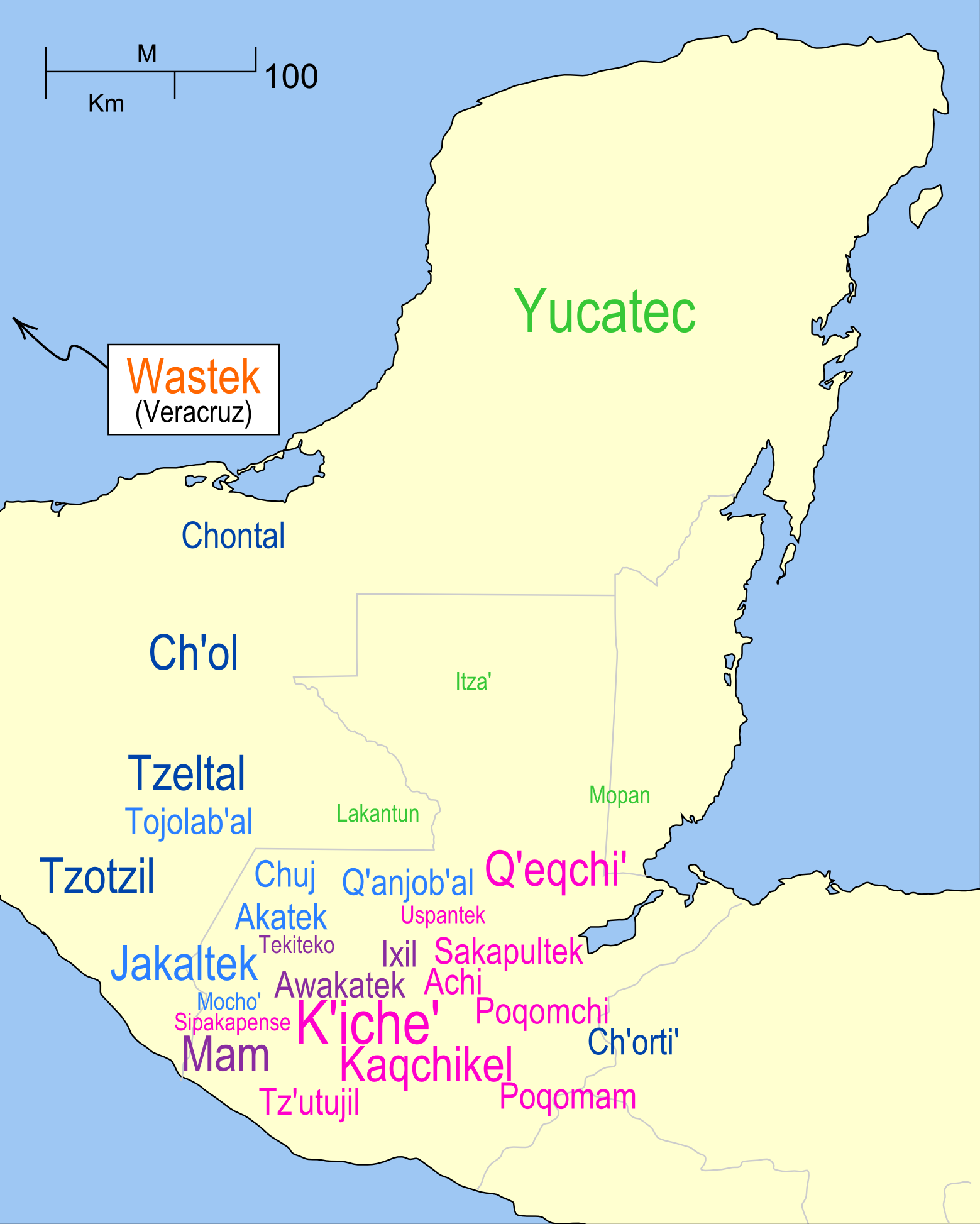Mayan Languages
Achievement
The ancient Maya spoke around 37 different languages and the Maya today speak around 28!
Maya children from Melody School, Guatemala, saying “great” in Kaqchikel.
Page Contents
Introduction to Mayan Languages
Remember we are using ‘Mayan’ here, rather than ‘Maya’, as we are talking about the language. For everything else, it is Maya.
There are actually many Mayan languages of which 28 are spoken today. The map below shows you where these languages are spoken.
Very much like there are old versions of English that were spoken in ancient times, the language spoken by the ancient Maya was probably an earlier form of Ch’olti’ and Ch’orti’ that is now called “Classic Mayan”.
The Kaqchikel, or Kaqchiquel, language (formerly spelled Cakchiquel) is spoken by the indigenous Kaqchikel people in central Guatemala, including the children at Melody School, who Dr Diane works with.
Children’s Activities

Why don’t you learn some Kaqchikel?
Greeting Dialogue
(Good morning – hello – how are you – I am fine, how are you – I am fine)
Between two people:
Person A: Saqär k’a? (Sa-ka kaa)
Person B: Saqär matyőx (Sa-ka ma-tiosh)
Person A: Ütz awäch? (Ootz a-watch)
Person B: Ütz matyőx – la ütz awätch rat? (Ootz ma-tioch – la ootz a-watch rat)
Person A: Ütz matyőx (Ootz ma-tiosh)
Person B: Matyőx k’ari’ (Ma-tioch k’aree)
The k’ in the last line makes a sound known as a glottal stop, not a sound made in English. It is a short, sharp sound made at the back of the throat which is immediately cut off by the back of the tongue – not easy to do, but fun for the class!
Ixnal and Kawoq speaking the greeting dialogue above.
For the class:
Teacher: Saqär k’a?
Class/Pupil: Saqär tij’onel (tij’onel = teacher)
Children from Melody School saying good morning/hello
Saqär k’a is the greeting used in the morning. The times of day are reflected by the movement of the sun and greetings alter accordingly, depending on what time of day it is.
Saqär k’a? Is used for the rising of the sun
Xqaq’ij k’a? Is used for the setting of the sun
Xokaq’a k’a? Is used at night
Children from Melody School saying good afternoon
Names
Rin nub’i’ [name] I am [name]
Rat ab’i’ [name] You are [name]
Rija rub’i’ [name] He is [name]
Roq qab’i [names] We are [names]
Rix rub’i’ [names] They are [names] /informal/
Rije kib’i’ [names] They are [names] /formal/
Children from Melody School saying goodnight
Resources to Download
These resources were written by teachers on a CPD trip with Dr Diane to the Maya area. You can download these below.
Please note – you will need to use your personal, rather than your school’s email address to download these files, as most schools disable the ability to receive files from outside their domain.
You can access the complete scheme of work for a small fee, in the form of a donation to the charity Chok Education, which supports the education of Maya children.
Other Resources
- Vocabulary and Lesson Resources
- Videos of Kaqchikel being spoken, great for pronunciation
- Kaqchikel Counting Worksheet – Kaqchikel language pronunciation guide and shows the name of each number.


Hi Diane,
Thank you so much for sharing these fantastic resources.
I was wondering if there are translations for the greeting dialogue?
Person A: Saqär k’a?
Person B: Saqär matyőx
Person A: Ütz awäch?
Person B: Ütz matyőx – la ütz awätch rat?
Person A: Ütz matyőx
Person B: Matyőx k’ari’
Thank you in advance,
Lucia
Hello, this is a greeting dialogue. So person A says good day and person b replies good day to you. Then person A says how are you and they reply with i am well thank you and asks the person the same thing and they reply in a similar manner.